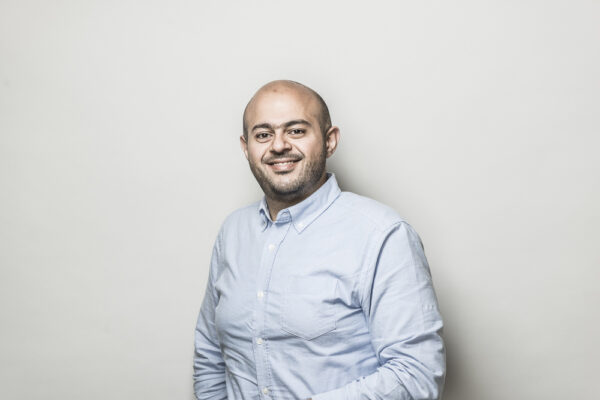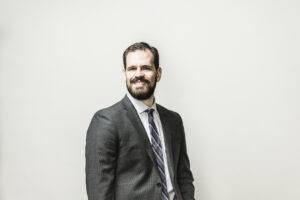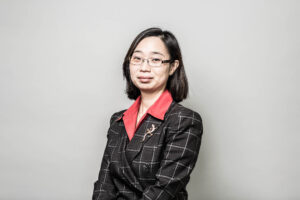Lassonde Innovation Fund (LIF): Promoting innovative research through internal funding
Tags:
Lassonde researchers are taking risks and investigating novel technologies with the help of the Lassonde Innovation Fund (LIF). From making masonry bricks out of treated municipal and livestock waste by-products to bolstering star-tracking algorithms with AI to prevent satellite collisions, Lassonde researchers are producing disruptive technology and trailblazing new frontiers.
The Lassonde Innovation Fund is a Research Boost Initiative which, over the last four years, has supported over 20 research projects through an investment of over $630,000. The fund is designed for new and experimental projects, led by interdisciplinary teams, and focused on research aimed at addressing many of the United Nations Sustainable Development Goals (UN SDGs).
Approximately 40% of the LIF-funded projects were of an interdisciplinary nature, crossing departmental and Faculty boundaries, 33% were led by female researchers and over 50% addressed a UN SDG.
“The impact of the research that has come from LIF has been tremendous on both the training and innovation front,” commented John Moores, Associate Dean of Research & Graduate Studies at Lassonde. Since its launch, the seed funding has enhanced the training of graduate and undergraduate students and generated over 30 high impact publications and 11 new external funding applications.
The range of projects has been impressive, and with the 2022 LIF Call of Application now open, you can learn more about some of our ongoing projects below:
Sustainable Reuse of Sludge in Bio-Brick Production
Voula Pantazopoulou and Ahmed Eldyasti


Behind every challenge there is an opportunity, or, in the case of two Lassonde Civil Engineering Professors, Voula (S.J.) Pantazopoulou and Ahmed Eldyasti, the opportunity was hidden behind two challenges in two distinct industries – construction and disposal of treated wastes. Simply put, in construction, the production of building materials, such as masonry bricks, is highly energy intensive, environmentally unfriendly and contributes to more than half of the CO2 footprint of a building; it is also highly consumptive of natural resources (quarries of shale deposits). In municipal and livestock waste management, disposal of treated sludge by-product resulting from extraction processes also leads to great financial and environmental burdens.
A team led by Dr. Pantazopoulou identified that this burdensome treated sludge-by-product possesses high polymer content and has potential to be used as source constituent in fired brick production, solving two problems at once. In their LIF project, Professor Pantazopoulou and Professor Eldyasti developed technologies to integrate high biopolymer sludge waste as a partial clay replacement in construction products, and published results showing that the bio-bricks met quality control criteria set by the masonry industry. By reducing environmental impact from clay-quarries and simultaneously facilitating disposal of waste, this work contributes to SDG 11 – Sustainable Cities and Communities.
Integrated structural health monitoring of carbon fiber composites
Gerd Grau and Garrett Melenka


Due to their high strength and light weight, carbon fiber composites are a promising class of structural materials seeing increased use in applications ranging from bicycle frames to bridges. More recently, the development of braided carbon fiber bundles encased in a resin matrix offers a way to manufacture freeform shapes. However, this development introduces a major concern for structural health monitoring (SHM) as these complex structures are difficult to monitor with discrete sensors.
To tackle this SHM challenge, Lassonde Professors Gerd Grau (Electrical Engineering & Computer Science) and Garrett Melenka (Mechanical Engineering) are directly incorporating electrically-conducting or light-emitting functionality into the carbon fiber composite. They have shown that embedding printed electronics enables damage location sensing, and embedding electroluminescent films facilitates damage visualization by lighting up structurally weak segments. This LIF project brought together Professor Melenka’s expertise in braided composites and Professor Grau’s expertise in printed electronics, leading to three journal articles and three conference papers, even applying this technology as an integrated heater to de-ice the wings of drones. They are now seeking further funding to continue this interdisciplinary, transformative research.
Resident Space Object (RSO) identification using artificial intelligence
Regina Lee

Since the days of Sputnik 1, there has been an ever-increasing deployment of Earth-orbit satellites for scientific, commercial, communications and navigation use. These resident space objects (RSOs), which also include man-made debris, number in the millions and pose significant collision risks for spacecraft and satellites. Current methods to track RSOs rely on a large-scale, and expensive monitoring network. However, Regina Lee, Professor in the Department of Earth & Space Science & Engineering, is combining space-based surveillance technologies found in low-cost commercial grade satellites with AI as a novel approach to RSO identification and tracking.
Satellites already contain the hardware to track stars to orient themselves in space. Lee is using the same technology to instead identify RSOs and improving upon it with AI.
Lee and her team are working with Defence Research and Development Canada to develop and demonstrate their tracking system. The success of this LIF project has led to six publications and additional funding with the Canadian Space Agency and Department of National Defence.
Photo-Thermal Optical Coherence Tomography for Risk Assessment of Atherosclerosis
Nima Tabatabaei

In atherosclerosis of the coronary arteries, lesions develop on the arterial wall from the buildup of lipids, collagen and other material known as plaque. These growing lesions can potentially rupture and cause a coronary thrombosis (a clot) which can be fatal. Early identification of lesions at greatest risk of rupturing is of utmost importance in interventional cardiology. While intravascular imaging techniques such as Optical Coherence Tomography (OCT) can already visualize the plaque’s structure at high resolution, they are unable to determine chemical composition. This is crucial to ascertaining atherosclerosis risk because chemical composition, specifically the lipid content, of plaques is highly correlated with risk of rupture.
Mechanical Engineering Professor Nima Tabatabaei is exploring the application of a photo-thermal extension to OCT (PT-OCT) to capture high-resolution structural images of tissue co-registered with lipid composition information, as well as innovations for significantly enhancing the imaging speed of PT-OCT. The innovation is based on the phenomena that different molecules absorb light and generate heat (thermal energy) in differing amounts. The measured thermal energy serves as a chemical signature to discern lipids from other plaque material and is sensed interferometrically via conventional OCT method. This LIF project has led to four publications and received additional funding from the Kuwait Foundation for the Advancement of Sciences.